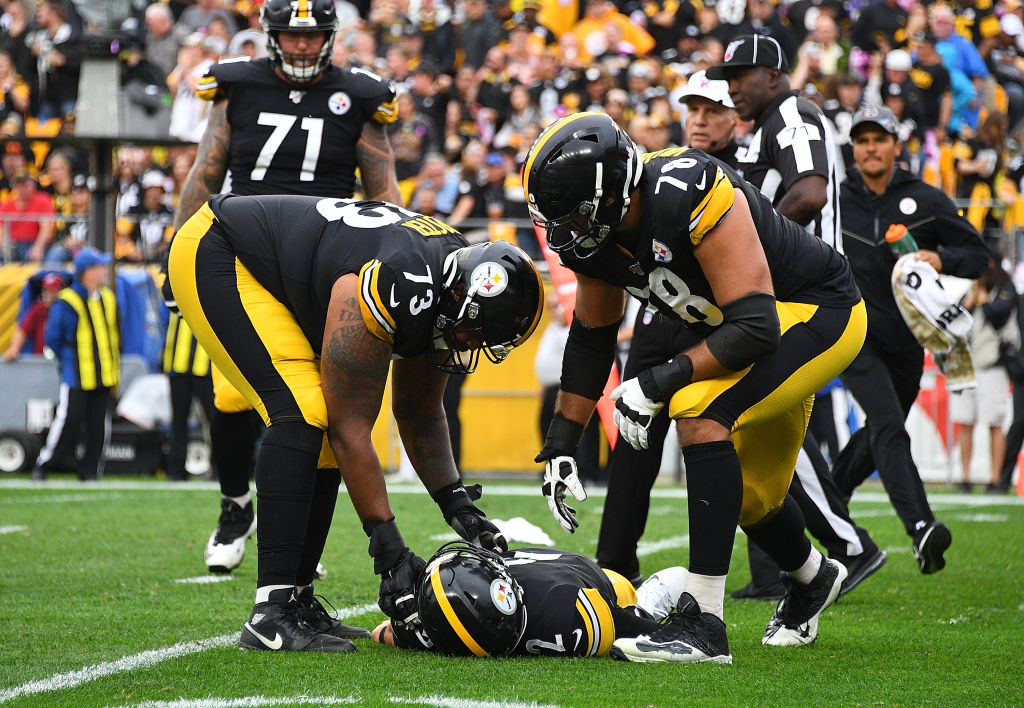NFL
NFL Concussion Protocol Explained: How Does It Work?

We used to think head injuries were just part of playing football. Years later, however, we started to see problems. Some NFL players even died by suicide after struggling with concussion-related head trauma. As scientific research found a connection between concussions and neurological problems, some athletes received a diagnosis of chronic traumatic encephalopathy, also known as CTE.
After a long battle with leadership, the NFL created new policies to address head injuries. The Head, Neck and Spine committee founded the concussion protocol in 2009. Over the years, the regulations have changed as they identified weaknesses within the system. So how does the concussion protocol really work?
How the NFL identifies concussions
RELATED: Jamal Lewis Made Over $46 Million and Is Now a Concussion Advocate
During every NFL game, spotters watch the players on the field. A few will be on the sidelines, and a few will watch in a booth from above. If they spot anything suspicious with a play or athlete, they call a timeout. Someone will escort the person off the field to receive an evaluation.
In addition to the spotters, each team has an assigned neurotrauma expert who monitors players from the sidelines. They help monitor and evaluate a player’s condition. Some signs this team looks for are loss of balance and loss of consciousness after a hit. They watch for signs of confusion, disorientation, head clutching, facial injuries, and slow movements following a hard-hitting play.
Whenever they spot these signs, the player will go to the medical tent, locker room, or hospital for further evaluation. That’s when the concussion protocol goes into effect for the athlete.
How does concussion protocol work?
RELATED: A 1994 Commercial Eerily Predicted Troy Aikman’s Eventual Concussion Problems
The NFL concussion protocol requires many measures before a player can take the field again, according to ESPN. It begins with rest and recovery, where the athlete must avoid all activities except stretching. We saw this with Steelers quarterback Mason Rudolph, who suffered a concussion against the Ravens in Week 5 of the 2019 season. Before he can play again, Rudolph must return to his baseline status determined in the preseason.
When a player reaches the next phase, they can begin light aerobic exercises under the supervision of the team’s medical staff. When they’ve met this sufficiently, they will continue with cardiovascular workouts and start introducing strength training.
As a player progresses, they can perform position-specific training, minus contact activities. Once the team physician clears the player to return to practices, the neurotrauma expert will also perform an evaluation. If they agree with the team doctor’s findings, the player can return to practice and games.
What happens when a team fails to follow the concussion protocol?
The NFL’s Head, Neck, and Spine committee have set hefty fines for teams that fail to follow the concussion protocol and protect players. In 2016, explains SB Nation, Seahawk quarterback Russell Wilson received a concussion evaluation but returned to the game almost immediately. He was asked to leave again for a thorough examination, which he passed. The Seahawks were investigated and fined $100,000 for how they handled the situation.
For the first violation, Head, Neck, and Spine committee will enforce a fine of $50,000 to $150,000. Any subsequent breach will cost the team another $50,000 to $100,000. They could also lose draft picks if the situation calls for it. If an investigation determines that aggravating circumstances occurred, they will look into heftier fines.
The NFL has made some positive efforts to protect its players against the long-term effects of concussions. As they collect data each season, they plan to implement new policies to address the weaknesses in the concussion protocol.











